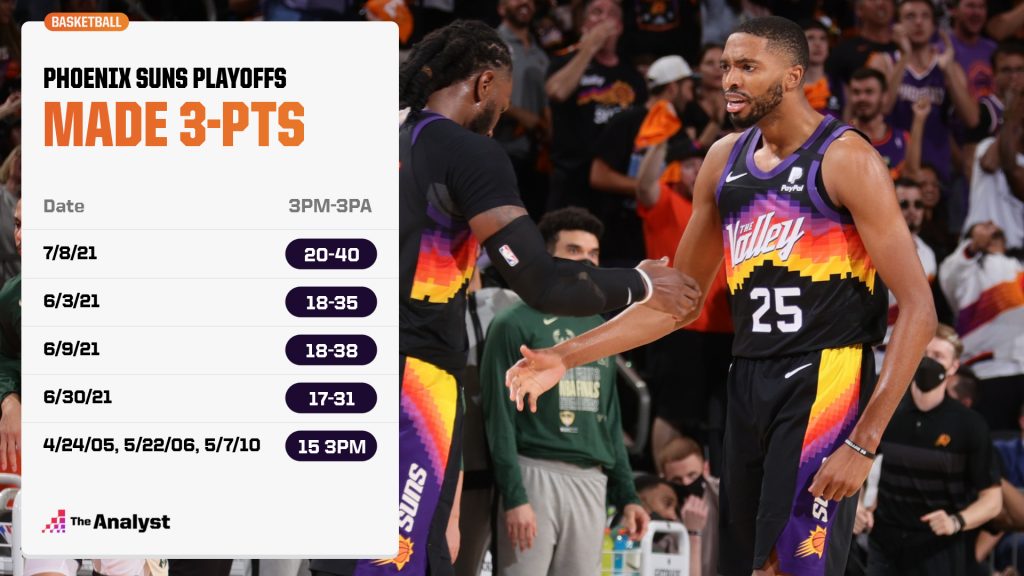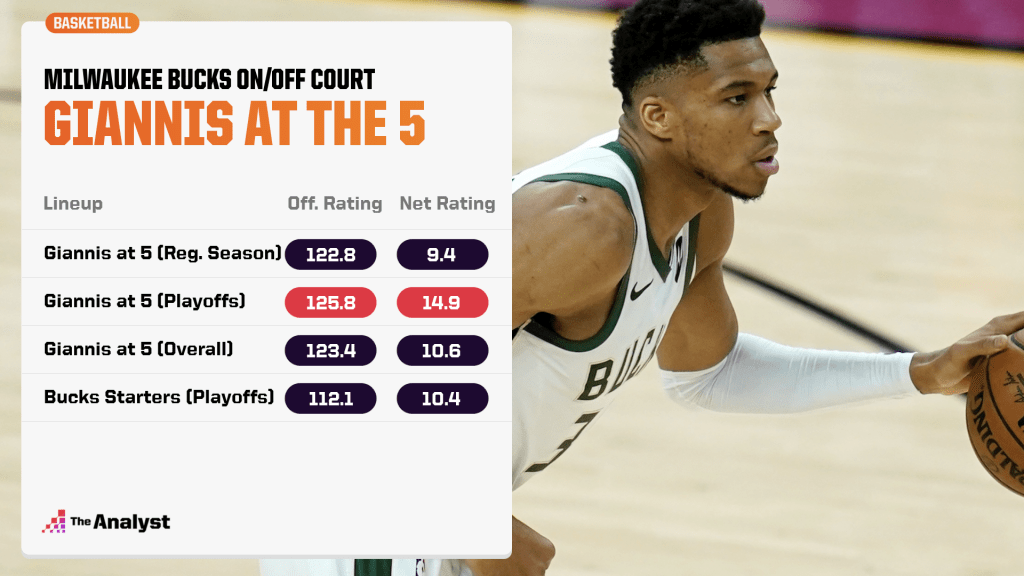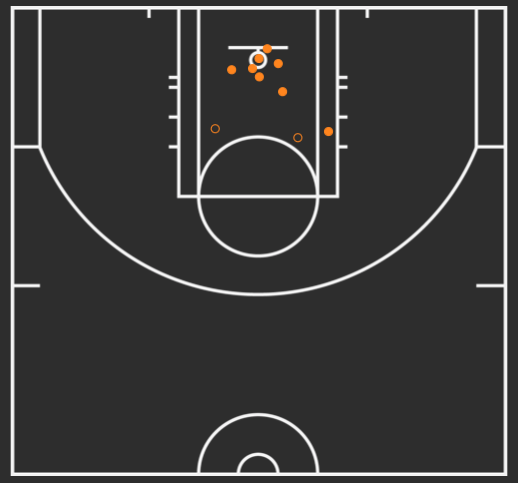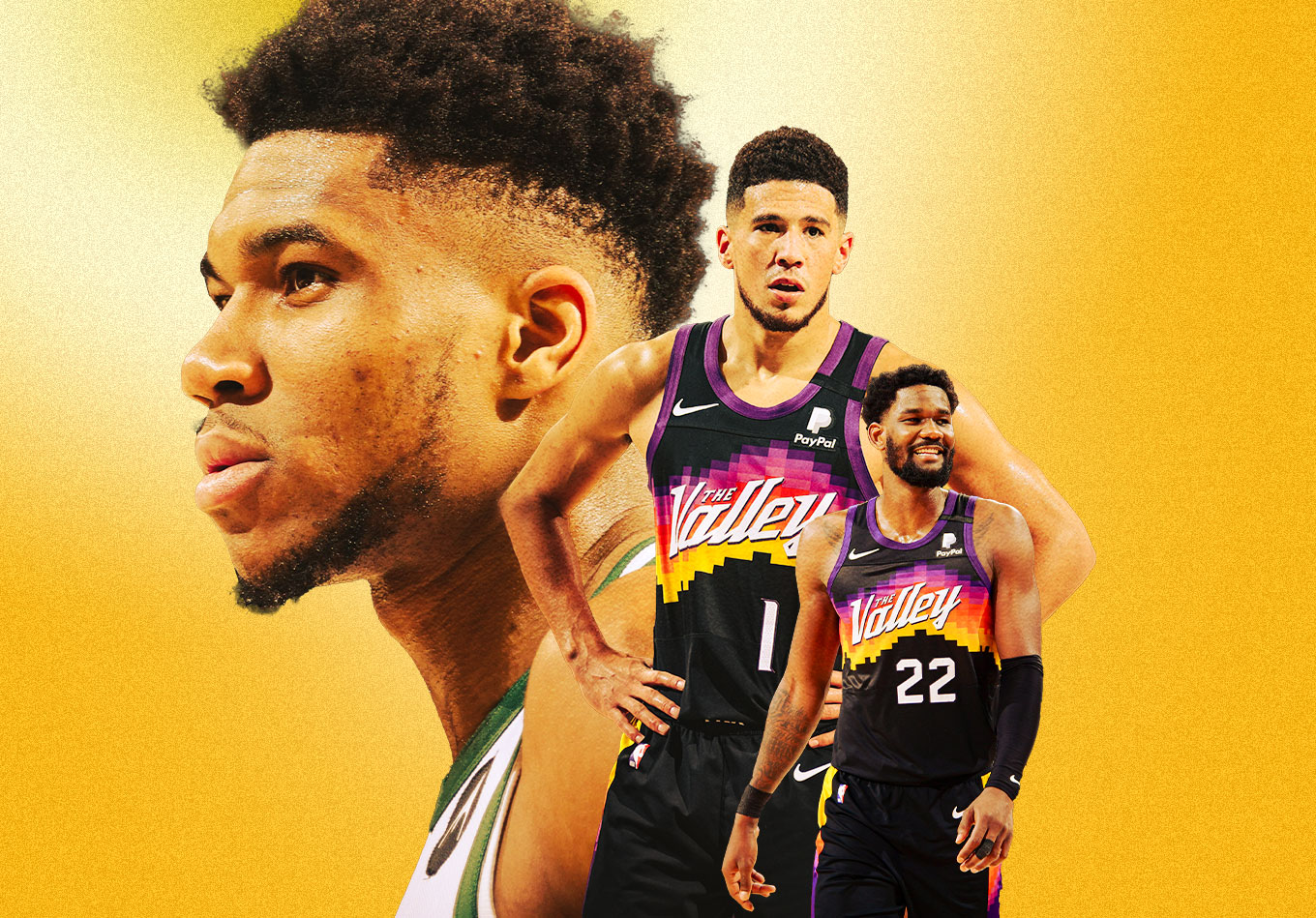Welcome to The Data Day, our daily NBA Finals blog where we try to make sense of what just happened, examine the key players and matchups, and identify any potential adjustments as the series progresses.
Bridges, Suns’ Role Players not Throwing Away Their Shot
Turns out all the adjustments in the world don’t matter if your opponent shoots 20 of 40 from 3-point range.
Mike Budenholzer and the Bucks tried a variety of different looks defensively in Game 2 to keep Chris Paul and Devin Booker from slicing and dicing them in the pick-and-roll. Some of it worked quite well at times, namely Jrue Holiday pestering Paul and picking him up at halfcourt, Milwaukee being more aggressive in stunting on the wings and Brook Lopez recovering almost flawlessly to alter shots and provide rim protection. Phoenix was 6 for 16 (37.5%) in the restricted area after going 15 for 20 (75.0%) in Game 1.
But the Suns aren’t a team that you can easily fluster. They continually made the extra pass once the Bucks were out of position to find wide-open shooters – Exhibit A, your honor, is Phoenix’s 7 of 10 shooting on left corner 3s in the first half – en route to becoming just the second team in Finals history to hit 20 3s while shooting at least 50% from long distance and setting a franchise playoff record for 3s made in a game.

The most impressive extra-pass sequence for Monty Williams’ team led to three points the old-fashioned way. With 36 seconds in the first half and a 53-45 lead, the Suns threw 13 passes – the last 11 in the halfcourt – before Mikal Bridges found Deandre Ayton for an and-1 lay-in.
That gave Phoenix its first double-digit lead of the game, and it hasn’t lost when it goes up by at least 10 in this postseason. The Suns are 13-0 once they take a double-figures lead, two shy of matching last season’s Lakers and the 2014-15 Warriors for the most consecutive wins when up by 10-plus in a single playoff run this century.
118-105 in Game 1, 118-108 in Game 2, and the Suns head to Milwaukee as the 36th team to take a 2-0 Finals lead. Thirty-one of the first 35 won the title.
All of that lights-out shooting spoiled a take-no-prisoners dynamo of a performance from Giannis Antetokounmpo, who had 42 points – including 20 in the third, the first such Finals quarter with that many since Michael Jordan in 1993 against the Suns – along with 12 rebounds, four assists and three blocks. Giannis might not be feeling 100%, but even on one good leg he’s kept the Bucks competitive so far and is reason enough to believe this series isn’t over.
It will be if Milwaukee can’t get more from Holiday and Khris Middleton. Holiday is shooting 11 for 35 (31.4%) so far in the Finals, though he was more aggressive in Game 2 and did everything he could on the other end. Aside from taking on the challenge of cutting off Paul’s penetration in the first half, he recorded two incredible blocks – one on Booker and another on the 7-foot Ayton.
Middleton, on the other hand, has been pretty brutal at both ends. He went 5 of 16 from the field in Game 2, took a number of rushed, ill-advised 3s, and is now a team-worst minus-26 in the series. He has to play much, much better for this series to return to Phoenix.
Paul had 15 points and six assists after halftime Thursday and Booker went 7 of 12 from 3, extending his excellent midrange game for the second-most prolific shooting performance of his career beyond the arc. Only in the Suns’ closeout of the Lakers in Round 1 was he better (8 of 10).
But if you’re Milwaukee, you’ll live with Booker getting his. It’s when Bridges, Jae Crowder, Cam Johnson and Torrey Craig are knocking down 3s that you’re doomed. Those four went a combined 9 for 16 from distance in the first half.
Getting contributions from Bridges continues to be Phoenix’s trump card. The Suns can survive without him – he totaled 20 points and hit just one 3 in the last three games of the Western Conference finals – but they’re almost unbeatable if he wins. They’re 20-3 when he scores at least 18 after his 27-point effort in Game 2.
As Milwaukee heads home, the recipe isn’t overly complicated: Get more superhuman performances from Giannis, hope Middleton and Holiday remember that USA Basketball could, I suppose, technically rescind their Olympic invitations, and feed off what will be a desperate, thirsty crowd at Fiserv Forum. Lopez showed in Game 2 he can be on the floor and be effective. Connaughton can bust his tail on defense, get deflections and knock down some 3s.
Paul and Booker have been fantastic, but it might come down to Phoenix’s supporting cast just being significantly better than Milwaukee’s. It certainly has been so far.
Research support by Stats Perform’s Sam Hovland.
Giannis at the 5?
Staying out of defensive disadvantages on the perimeter. Neutralizing Deandre Ayton in the paint. Closing the gap at the free-throw line.
That’s likely just the start of the adjustments the Milwaukee Bucks have been considering as they look to even the NBA Finals in Game 2 against the Phoenix Suns on Thursday night.
The Bucks have been built on size and length across the roster in recent years. It’s part of what has made them one of the lead players in the modern era of positionless basketball in which one of the key components is defensive switchability – the ability to switch defenders on screens rather than play less effective coverages like drop or the high hedge/early weakside rotation coverage.
But that didn’t keep the Suns from exploiting that same reliable switchability in the opener. During key stretches throughout Tuesday’s 118-105 home win, they ran ball screens to create their desired matchups – often either Chris Paul or Devin Booker against either Bobby Portis Jr., Brook Lopez or Bryn Forbes.
Paul (32 points, nine assists in Game 1) went a combined 7 for 9 from the field – including 2 for 2 from the 3-point line – with either Lopez or Portis serving as his closest defender, while Booker (27 points) shot 6 of 10 overall with either Forbes, Lopez, Khris Middleton or Portis as the nearest on him. As our Brett Huston pointed out in the rolling NBA Finals blog, just three minutes into the third quarter, Phoenix had piled up 20 points on 11 possessions that it was able to get Lopez isolated against a guard.
At the same time, Booker missed all six of his attempts – including four from beyond the arc – when matched up against Jrue Holiday. Paul hit both his attempts from the field with Holiday as his closest defender, but he was just 2 for 7 while missing all three of his 3-point tries against either Pat Connaughton or P.J. Tucker.
In other words, the Bucks have to find a way to be more proactive in dictating matchups that are more advantageous instead of allowing Paul, Booker and the Suns to control the action and do whatever they want. That might mean fighting harder to stay with their man instead of immediately succumbing to a switch or rushing Paul and Booker with both defenders to get the ball out of their hands before they can initiate their attack.
Lopez was a factor offensively with 17 points (3 of 5 from 3) in the opener, but the Bucks no doubt saw things they liked from their small-ball lineup in the second half. We’re likely to see more of Giannis Antetokounmpo serving as Milwaukee’s big man in Game 2, though that means Forbes and Middleton are likely still out there defensively. The small-ball approach helped them give Trae Young and the Hawks some trouble in the Eastern Conference finals, allowing a more effective means of switching 1 through 5.
In fact, the Bucks have an impressive plus-14.9 net rating with Giannis at the 5 in the playoffs, which is up from a plus-9.4 mark in the regular season. It’s also a notable improvement – particularly on the offensive end (see below) – from the usual starting lineup of Lopez, Tucker, Giannis, Holiday and Middleton in the playoffs.

Offensively, the smaller lineup allows Giannis to work with greater driving space and gives him the option to kick to shooters if the defense collapses. Milwaukee was effective from the perimeter in the opener, hitting 16 of 36 (44.4%) from deep, but the team would like to see someone get to the free-throw line besides just Giannis.
The two-time MVP, who had 20 points, 17 rebounds, four assists, two steals and one LeBron-like chase-down block despite coming off a knee injury, went 7 for 12 from the line while the rest of the team totaled four attempts. The Suns, meanwhile, converted 25 of 26 from the stripe with Booker sinking all 10 of his attempts.
Milwaukee is going to need a better performance overall from Holiday, who managed just 10 points on 4-of-14 shooting. The key pickup in a four-team November trade averaged 17.7 points during the regular season and the Bucks are 5-1 in the playoffs when he scores at least 20.
Of course, the small-ball lineup has its drawbacks. It’s likely not going to help them on the offensive glass or, along those same lines, contain the rising star Ayton. In the opener, the Bucks became one of only five teams with three second-chance points or fewer in a 2021 playoff game. And Ayton, who finished with 22 points and 19 rebounds, went 8 of 10 from the field by routinely sprinting past Lopez for layups or throwing down a lob after the Bucks try to help on a Paul drive.
Deandre Ayton Shot Chart, Game 1

The Suns have gone 15-1 this season, including 6-0 in the playoffs, when Ayton pulls down at least 15 rebounds. We could see more of Frank Kaminsky in Game 2 after backup big man Dario Saric suffered a torn ACL in the opener. In Game 1, Kaminsky had his first action since the West semifinals against the Denver Nuggets.
Design by Matt Sisneros. Data modeling by Matt Scott.
